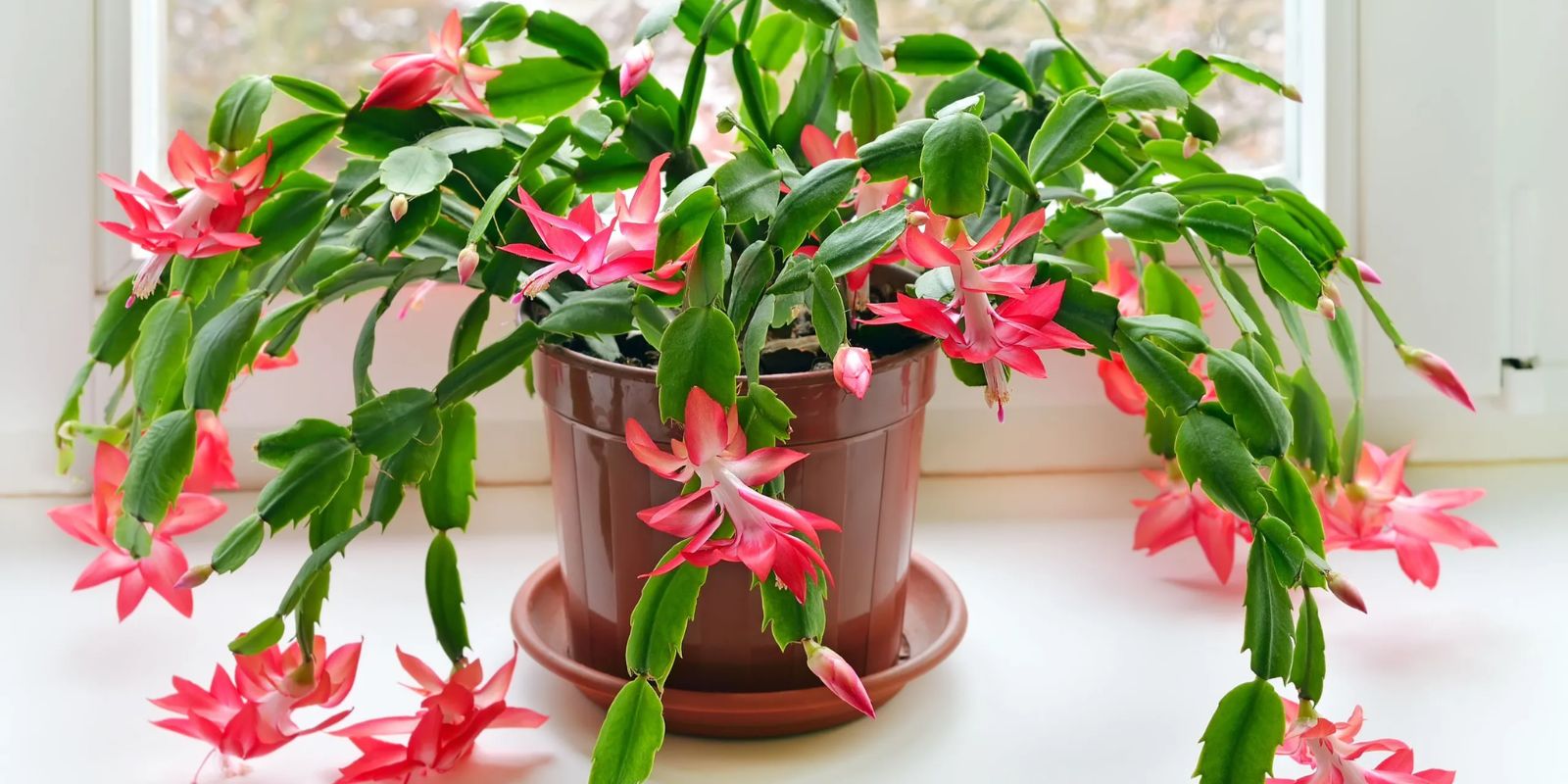The Christmas cactus (Schlumbergera), with its cascading blossoms, is a stunning addition to any indoor garden. Native to the rainforests of Brazil, it thrives in conditions quite different from the typical cactus. Unlike its desert cousins, the Christmas cactus enjoys humidity, indirect sunlight, and consistent care. Despite being relatively low-maintenance, it sometimes needs a bit of help to produce the abundant blooms we all admire during the holiday season.
A seasoned florist shared a tried-and-true method to revive this iconic plant and ensure it bursts into life with vibrant buds. This special care routine isn’t just for struggling plants; it’s a guide to help any Christmas cactus reach its full potential. Let’s dive into how you can make your Christmas cactus flourish and bloom non-stop!
Understanding the Christmas Cactus
Before we delve into the specific techniques, it’s essential to understand the unique needs of the Christmas cactus. Unlike desert cacti, this species requires a balance of moisture, proper lighting, and temperature regulation to thrive. Its blooming cycle typically begins in late fall, when the days grow shorter, and temperatures cool. By mimicking these conditions, you can trigger prolific flowering.
The Florist’s Secret: Reviving Your Christmas Cactus
1. The Power of Nutrients
One of the most critical components for encouraging blooms is providing the right nutrients. Choose a fertilizer high in potassium and phosphorus, as these elements promote flower development. A balanced 10-30-10 fertilizer diluted to half strength is ideal.
- When to Apply: Begin feeding your cactus every two weeks in early autumn and continue until buds form.
- Why It Works: Potassium enhances root health and flower quality, while phosphorus stimulates blooming.
2. Proper Watering Techniques
Christmas cacti are sensitive to overwatering, which can lead to root rot and leaf drop. Conversely, under-watering can cause the plant to shrivel and stress. Striking the right balance is key.
- Watering Schedule: Allow the top inch of soil to dry out between waterings. Use filtered or rainwater if possible, as hard water can harm the plant over time.
- Tip: Water more sparingly during the pre-bloom resting phase (6–8 weeks before expected flowering).
3. Strategic Placement
Lighting plays a significant role in triggering blooming. Christmas cacti prefer bright but indirect light. Direct sunlight can scorch their leaves, while too little light will inhibit bud formation.
- Ideal Spot: Place your cactus near a north- or east-facing window. If natural light is insufficient, consider using grow lights.
- Seasonal Adjustment: During the budding phase, maintain a consistent light-dark cycle (12–14 hours of darkness at night).
4. Cool It Down
Christmas cacti need a period of cooler temperatures to encourage bud development. This mimics the conditions of their native environment during the blooming season.
- Temperature Range: Keep the plant in a room where temperatures range between 55–65°F (13–18°C).
- Timing: Start this treatment in late September or early October for the best results.
5. Pruning and Repotting
While pruning isn’t essential, it can encourage fuller growth and more blooms in the following season. Similarly, repotting should only be done when the plant becomes root-bound, as Christmas cacti prefer slightly cramped quarters.
- Pruning Tip: After flowering, pinch off the tips of the stems to encourage branching.
- Repotting Advice: Use a well-draining potting mix, such as one designed for cacti and succulents.
6. Consistency is Key
Once buds form, avoid moving your Christmas cactus. Changes in light, temperature, or placement can cause buds to drop prematurely. Consistency in care is essential during this delicate phase.
- Avoid Drafts: Keep the plant away from vents, heaters, or drafty windows.
- Stable Environment: Water regularly, and maintain humidity with a pebble tray if necessary.
Why Your Christmas Cactus Might Struggle to Bloom
Sometimes, even with the best intentions, Christmas cacti can be stubborn about blooming. Here are a few common reasons:
- Inadequate Light: Too much or too little light can disrupt the blooming cycle.
- Improper Watering: Overwatering leads to root rot, while under-watering stresses the plant.
- No Dormancy Period: Without a cooler resting phase, the plant won’t produce buds.
- Stress from Repotting: Repotting too close to the blooming season can shock the plant.
Maintaining Year-Round Health
Even after the holiday blooms fade, your Christmas cactus needs care to remain healthy and vibrant. Here’s how to keep it thriving:
- Post-Bloom Care: Once flowering stops, reduce watering slightly and allow the plant to rest.
- Fertilizing Schedule: Resume fertilizing in spring to support new growth.
- Preventative Maintenance: Inspect for pests like mealybugs or spider mites, which can damage your plant.
A Blooming Success Story
Following these steps, many gardeners have turned struggling Christmas cacti into spectacular showpieces. With the florist’s advice in mind, you too can enjoy non-stop blooms and a healthier, happier plant.
This simple yet effective care routine ensures your Christmas cactus thrives year-round, becoming the centerpiece of your indoor garden during the holiday season and beyond.
Engage with Fellow Gardeners!
What are your favorite tips for caring for Christmas cacti? Share your experiences in the comments and inspire others to grow their own blooming beauties!

